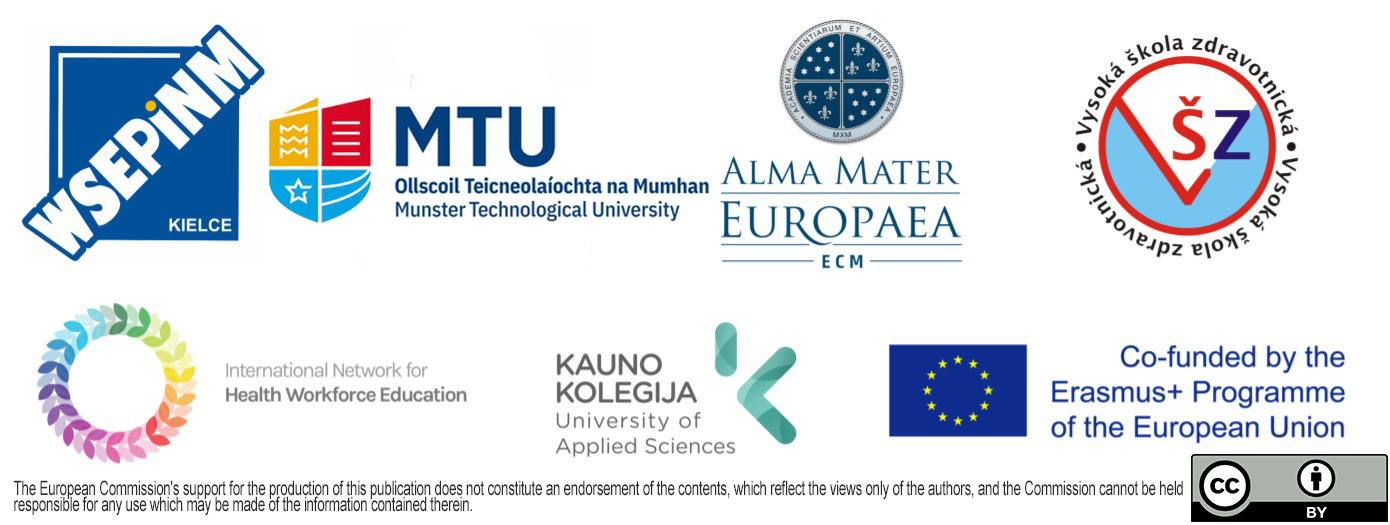Legal Issues of Medical Personnel in Dealing with Aggressive or Agitated Patients

Workplace violence against healthcare workers is a serious occupational issue that concerns both, staff and patients. Workplace violence, such as violent acts, including physical assaults or threats of assault, directed toward persons at work or on duty, may lead to increased service costs and lower standards of care. The framework for the course “Legal Issues of Medical Personnel in Dealing with Aggressive or Agitated Patients” is based on 4 pillars that can be divided into several individual blocks. Namely: 1) the subject-matter of a person's right to adequate, safe and healthy working conditions; 2) the regulation of rights and obligations of the medical staff providing personal health care services under the national legislation; 3) analysis of the legal content of the patients' rights and obligations; 4) legal requirements for the use of violence in the medical staff performance of duties against aggressive or agitated patients and/or when defending against illegal or violent actions of the patients. The aim of the course is to develop guidelines for health service workers/ hospital personnel/ health care practitioners (ambulance crews, emergency room staff), who have a primary contact with patients, to be able to correctly evaluate dangerous situations created by an aggressive or agitated patient from a legal point of view and, in this regard, apply legal measures. The training course embraces 20 lectures and focuses on human rights and patients’ rights as well as the rights of the medical personnel, taking into account the state of legislation de lege lata and de lege ferenda, as well as juridical decisions.
By the end of the course, the applicant will have knowledge in the following:
- the subject-matter of a person's right to appropriate, safe and healthy working conditions;
- the rights and responsibilities of the patient;
- the rights and responsibilities of the medical personnel providing health care services;
- the legal liability forms for non-compliance;
- legal remedies against aggressive or excited patients.
In addition, the participant of the project will be able to:
- determine the relationship between legal and moral standards in providing personal health care services;
- legally define forms of aggression;
- ensure that the provision of personal health care services meets the specific needs of patients without prejudice to their rights.
Specification of the output knowledge and professional competences and skills
The graduate of the course Legal Issues of Medical Personnel in Dealing with Aggressive or Agitated Patients in health care will be able to:
1. Remember: the graduate identifies and defines the legal concept of violence, legal liability forms for actions of violence.
2. Understand: the graduate explains the concept of individual rights, identifies the rights and responsibilities of individuals providing health care, and identifies the specific needs of patients without prejudice to their rights.
3. Apply: the graduate is able to put the learned subject-matter into practice. The graduate is able to apply appropriate legal remedies against violent patient behaviour, to properly perform the duties of healthcare without violating patients' rights.
4. Analyze: The graduate is able to properly assess a violent patient’s behaviour.
5. Synthesize: The graduate is able to summarize the right to proper, safe and healthy working conditions, to draw up a handbook of the patient’s responsibilities.
6. Evaluate: The graduate is able to recognize a specific form of violence and assess the situation by legal requirements.
Contents of the course:
- The concept of violence and forms of legal responsibility for violent behaviour.
- The matter of a health care provider's right to adequate, safe and healthy working conditions . The right of workers, including health care workers, to have safe and healthy working conditions is guaranteed by international and national legislation. This section involves content analysis of a positive obligation on the part of the state and the employer to provide workers with safe and healthy working conditions in all aspects of work.
- The subject-matter of the rights and obligations of the medical staff providing personal health care services. The right to the health of the individual, both at national and international level, is highlighted as one of the fundamental rights of the person without whom the person would not be able to exercise his / her economic, political and social rights, and embraces the right to have the best possible physical and mental health. This part of the course presents conditions and criteria for the quality of personal health care services.
- The patients' rights and obligations: legal content analysis. This section covers the prevention of the manifestation of consumer-oriented rights and obligations in the context of equality between the parties involved in health care relations. Since the legal status of a person as a patient arises from the moment of referral to a health care institution, not only the exercise of rights but also the performance of duties is an integral part of the provision and receipt of healthcare services. This section covers a range of rights and obligations, their legal content, and, consequently, problems related with the implementation and application of legal norms.
- Legal requirements for the use of violence against aggressive or excited patients in the exercise of their duties as medical staff and / or in defending against illicit, violent patients. This section includes the legal requirements for prescribing substances, restricting patients' freedom, providing legal protection, with the purpose of protecting patient / personnel safety, also, the form and the type of legal liability in case of exceeding the limits of legal protection.
6. Review, model situations
During the final block, participants will prepare a legal analysis of a specific case based on their own choice or instructor assignment, to demonstrate their theoretical knowledge individually or in small groups.
Tools and equipment:
A static video camera, a GoPro camera, restrictive means, documentation, chairs, mattresses, hospital bed.
